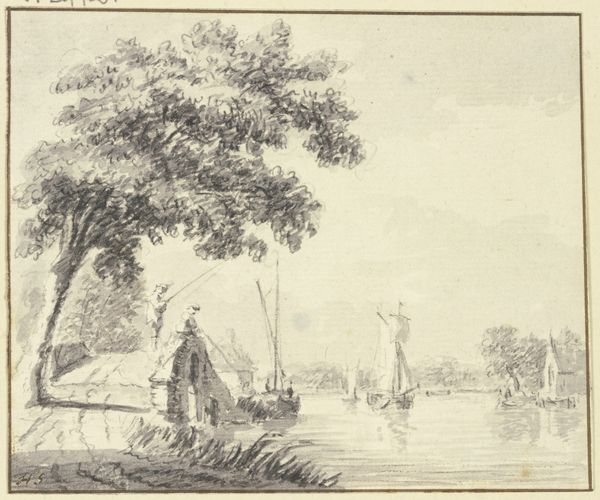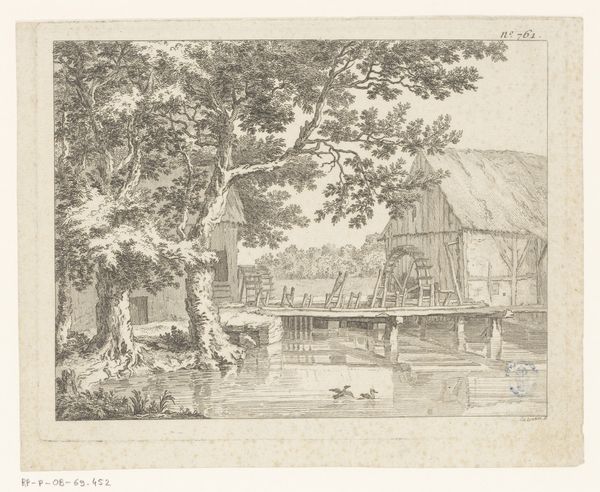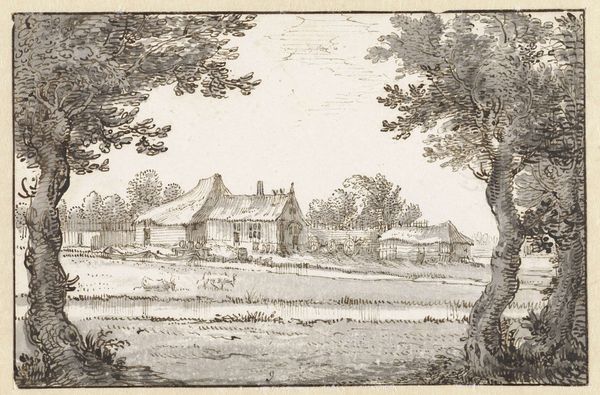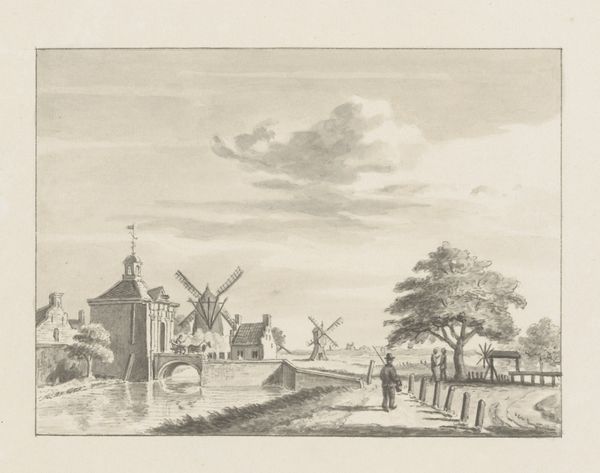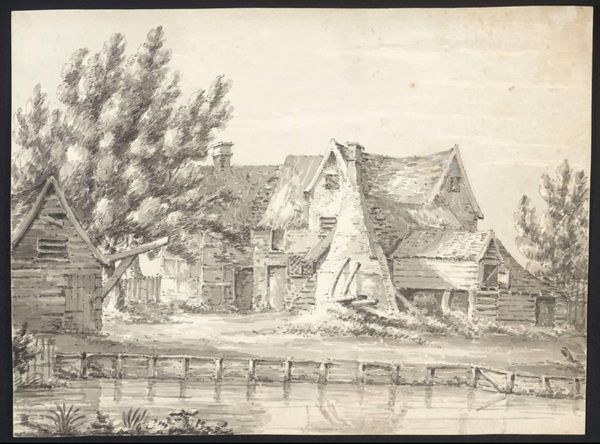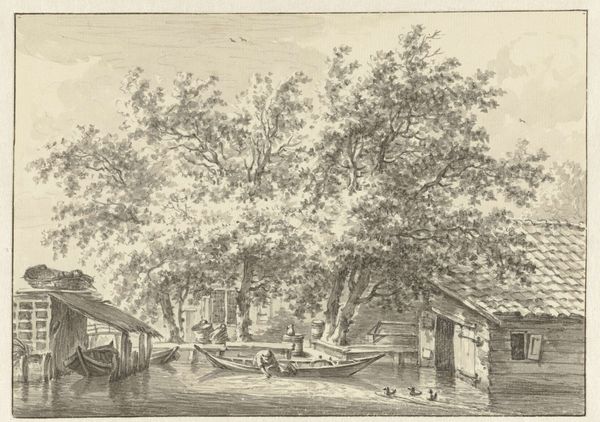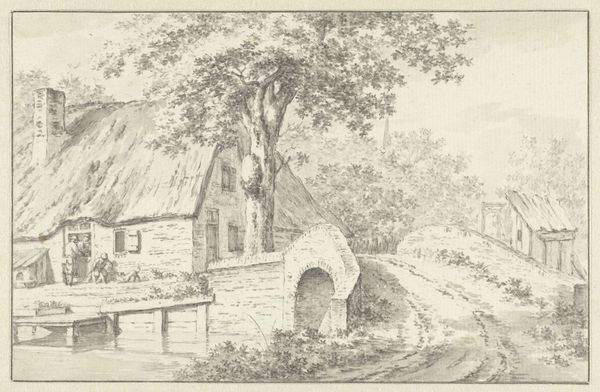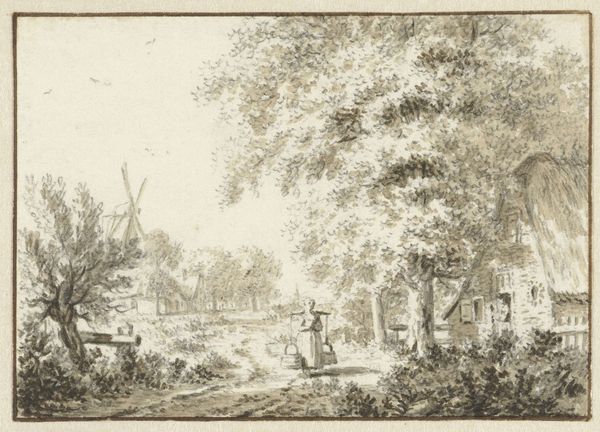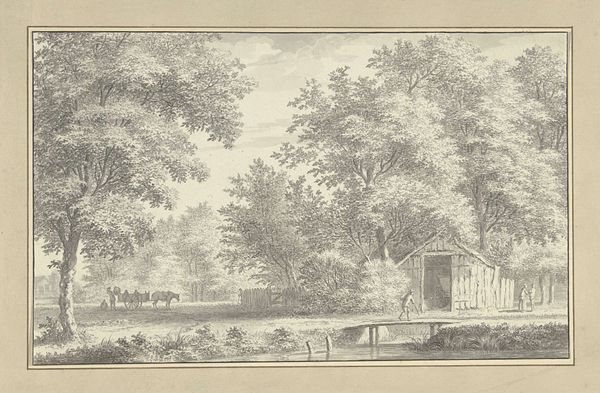
Copyright: Public Domain
Editor: Here we have Paulus van Liender's "De Gheynbrugge near Utrecht," created in 1769 using ink and Indian ink. The subdued color palette gives it a melancholic mood. What do you see in this piece? Curator: It's fascinating how van Liender uses the familiar image of the bridge, the namesake of the piece, as a connecting thread through time, evoking a sense of nostalgia. The bridge itself, as an archetypal symbol, connects not just physical spaces but also ideas, past and present, known and unknown. What cultural echoes do you detect in the treatment of nature itself? Editor: I guess there is a very neat taming of nature here; almost domesticated. Not rough or wild like in other Romantic era landscape paintings. Curator: Exactly. This 'tamed' nature, with its carefully placed trees and placid water, suggests a yearning for a harmonious relationship between humanity and the natural world – a visual manifestation of a cultural memory of simpler times perhaps. Consider also how water reflects: here it's mirroring and distorting at once, speaking perhaps to memory and truth. What might the symbolism of the figures in the boat suggest in that context? Editor: It feels almost like a glimpse into the past. They seem isolated. I hadn’t really considered how each element adds to that feeling. Curator: Precisely. Van Liender masterfully uses symbols embedded in a seemingly simple landscape to evoke deeper cultural and emotional resonance. Editor: It’s made me realize how even seemingly straightforward landscapes can be full of historical and cultural weight. Curator: And how a skilled artist can subtly awaken those associations within us.
Comments
No comments
Be the first to comment and join the conversation on the ultimate creative platform.


